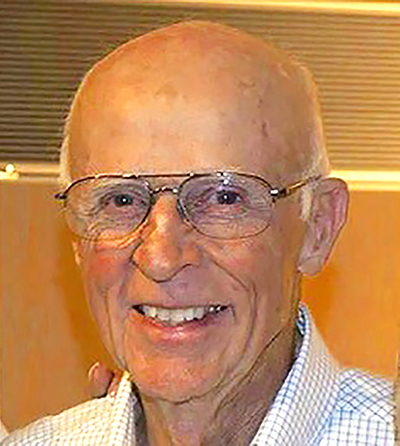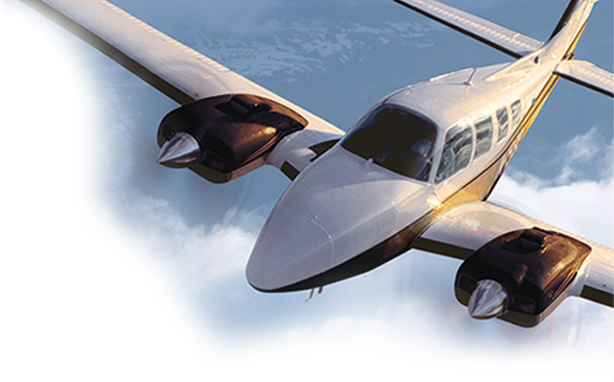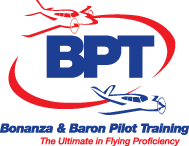The Dreaded Steep Turn
Yes, you can fly and enjoy steep turns with precision!
By Hank Canterbury

Performing a “steep turn” does have a place in a pilot’s “bag of tricks.” Being able to accurately perform steep turns is a good indication of a pilot’s proficiency, knowledge, situational awareness and control smoothness. Done properly, steep turns are useful and fun to do. Every pilot should be comfortable performing them; however, few pilots use or practice them.
Many pilots seldom do steep turns after passing a check ride. Unfortunately, that self-imposed restriction limits what they can competently do in a variety of flight conditions. While one can fly without ever performing a steep turn, understanding the maneuver, getting proper training and regular practice makes a huge skill improvement in all areas of flying, as well as preventing accidents from incorrect application of controls.
Later in this article, after we explore the subject further, I will recommend a technique to help you fly steep turns with precision and confidence.
Important: During any discussion of stalls and stall speeds, it is critical to understand — and keep firmly in mind — that a wing can be stalled at any speed and in any attitude by exceeding the critical angle of attack (AOA), usually by pulling excessive back elevator pressure on the yoke. Adding G’s (load factor) effectively increases the weight of the plane. The elevator is the control that causes a plane to turn. A loop is a 360-degree turn in the vertical plane done entirely with elevator.
Increased stalling speed in a steep bank is often used to warn pilots that such turns are dangerous and could lead to loss of control (LOC). While it is possible to stall in any attitude, such warnings — and the incomplete instruction that usually accompanies them — are exaggerated and discourage pilots from exceeding 30 degrees of bank.
But speed is really not the key factor here — it is load factor, controlled by the pilot with back elevator pressure that makes the plane turn when level, descending or climbing.
Unless a pilot greatly over-controls the elevator, and thus forces a wing to exceed the critical angle where lift stops increasing, concern over sudden loss of control or developing into a steeper, rapidly descending turn is no more likely than performing any other maneuver. Pulling the yoke aft in any attitude increases the AOA; pulling too hard can lead to a stall even when going straight down.
What is so dangerous or difficult about adding just ½ G to the normal 1G load when performing a 45-degree bank? Flying any maneuver requires varying the load on the plane with the elevator. The pilot has ultimate control of how much elevator is used. The plane won’t stall unless the pilot makes it do so. Preventing a stall while banked is easily managed with elevator control. Stall speed will vary considerably with the amount and rapidity of load or G application.
What’s a steep turn? The definition of “steep” is a bit fuzzy. In some places the FAA calls 45 degrees a medium bank; other places that’s considered a steep bank. The fact is, a steep bank is actually defined by the aircraft’s static stability, which is normally positive; meaning it tends to return to a previously trimmed condition if disturbed. “Steep” is the point when the plane’s static stability turns negative and tries to increase the bank angle instead of maintaining it. That point varies by design / type of aircraft. Often, it is explained by stating the outside wing travels faster than the inside wing, creating more lift and thus, causing an over-banking tendency.
During pilot training, we must demonstrate skill in performing steep turns. In Private Airplane Airman Certification Standards (ACS) tasks/maneuvers, a pilot is required to establish and maintain a bank angle of 45 degrees during a level 360-degree turn; in the Commercial ACS, it specifies 50 degrees and 720 degrees, plus steep spirals. In both conditions, when the total lift vector is tilted away from vertical, the horizonal vector is pulling the plane into a turn. If the plane is to remain in level or in steady, balanced flight, it is necessary to increase AOA to produce enough additional total lift so that the vertical component remains equal to weight.
Let’s take a deeper dive into the physics of turns. First, stall speed — which, for any bank, is found by multiplying the 1G stall speed (Vso or Vs for weight) times the square root of the G’s used: (Vs45 = Vs x Ö G). In your POH, there is a graph for 1G stall speeds that also indicates how much stall speed increases with bank angle.
For example, using Vs, defined as the 1G clean configuration stall speed, a Bonanza at 3,400 pounds is listed as 54 KIAS. Forty-five (45) degrees works out to be 64 knots or a 19% increase. For 50 degrees, it’s 71 knots or a 41% increase over 1G. Of course, those speeds will be less as gross weight decreases.
But what is the necessary load factor (G) to achieve a steady state turn? To determine the G-load factor for any bank, divide 1.00 by the cosine of the bank angle (G = 1/cosine bank angle). To keep flight forces in balance, the tilted lift vector must be increased with aft elevator so that the vertical portion remains equal to actual vertical weight; otherwise, the plane will accelerate downward.
A key point: Some ask, “Can I bank and apply less G than necessary to hold level as in a turn to final?” Yes, the plane will turn because your lift vector is tilted into the turn. Your AOA will not be as great or as close to critical (safer?). But when the plane is banked and not enough G is applied to remain balanced (vertical lift equal to effective weight), it will turn and descend, gaining airspeed. In such a case, the aircraft would turn, but the rate of turn would not be as great, and as airspeed is allowed to increase, the turn radius would also increase.
Maintaining coordinated flight at 45 degrees of bank (level or in a descending turn), takes 1.42 G’s; 50 degrees takes 1.74 G’s; and 60 degrees takes 2.0 G’s. Those loads are nowhere near the Limit Load of either 3.8 or 4.4 G’s for most of our planes. Remember, if a turn begins at an airspeed already near the 1G stalling speed, the plane will stall sooner as back pressure is increased toward critical AOA.
We don’t have G-meters, so we have to develop a feel for how much squeeze into the seat is needed, yet not excessive. And that comes with repetition to learn how much we can pull at various airspeeds. That’s why it is important to learn and react to the indications that your plane is approaching a stall so that you don’t overdo the back pressure. Simply releasing a small amount of back pressure will stop the progress.
I’ve summarized these numbers in the two tables below. They are valid for constant airspeed, coordinated flight as stated above. Convert to mph by multiplying by 1.15.

The discussion below applies to a turn that is coordinated, at stabilized airspeed, either level or in a constant rate of descent or climb.
Technique: Here’s a technique to help you learn how to fly these turns with greater confidence and accuracy. While on the ground, sitting in your usual position look straight ahead parallel to the centerline of the aircraft at the distant horizon. Use the cowling hinge as a guide. Do not look at the spinner or center of the nose, but parallel to the hinge. Now, put a mark with a grease pencil or erasable pen on your windscreen near the point it intersects the horizon. It doesn’t have to be precisely on the horizon. If you happen to have a bug splat near the point, it will work, too. Name that bug. This can also be done in the air but is easier done on the ground.
The mark (or bug) will now become a more visible and responsive pitch attitude indicator to help you achieve the right amount of pull on the yoke for an increased AOA. As you will see, it beats trying to use the glare shield angle, and the sight picture will be the same either direction of turn.
During training, I like to start practice at a comfortable altitude and 120 KIAS so there is a wide margin above the slightly increased speed. The key is control of AOA — which is easily managed by how hard you pull on the yoke.
To practice the turn, first begin by stabilizing the plane level at 120 KIAS. (Barons work better at 130 – 140 KIAS.) Trim for that speed and power setting. You can either do the turn without trimming the increased pressure off — which I recommend — or trim some off. You will develop a better feel for the maneuver by not trimming off the increased pressure; just hold it.
While you are wings level, note the position of your mark relative to the distant horizon. Clear the direction of turn; roll smoothly into the chosen bank, steadily increasing back pressure as you pass about 25 – 30 degrees. Simultaneously increase manifold pressure (MP) 2 or 3 inches (more for 50 degrees). As you pull the yoke and stop at the bank angle, note the new position of the mark. It should appear to be about 2 inches higher than when wings are level.
Quickly check cockpit instruments to validate that you are holding altitude and correct bank angle. Remember, VSI is a supporting instrument but initially moves quickly. Make small adjustments in pitch or bank as needed. Once you have it right, freeze the bank angle and simply keep the mark where it is by pulling hard enough throughout the turn to move it parallel to the horizon. If the air speed is changing, add or take off power. When steady in level flight, power and airspeed are directly linked.
Once established at the desired attitude, with only an occasional check at the instruments, you will soon be able to achieve near perfectly level, constant-speed steep turns. Using the same speed, you will learn the approximate position of the bug to shoot for on the next turn, quickly hitting the correct initial pitch attitude.
Important — if you are climbing or descending, do not change your bank! Rather, only adjust back pressure slightly on the yoke. Pull a bit harder if descending or, if climbing, release only half of what you think you should. Again, reference the mark relative to the horizon. Using the bug in this way permits quick, easily visible pitch changes to attain and then hold it. Remember, each change in bank angle requires a different G-load to hold altitude, so try to keep at least one thing constant.
One more tip — when it’s time to stop the turn, if you haven’t retrimmed and are near the same starting airspeed, just release the back pressure as you smoothly roll out and reduce the added MP. The nose will go right back to the correct-level flight attitude. Often, I see pilots subconsciously push the yoke forward as they roll out, which causes a loss of about 200 feet.
Other considerations: For those of you wondering if stall speed also increases in a steep descending turn, the answer is yes, they will be the same when stabilized. At a constant vertical speed, flight forces must still be balanced; otherwise, if lift didn’t equal weight, the plane would be accelerating downward. So, G-force for the degree of bank will remain the same when stabilized in a descent (or climb). Once the flight path has been changed to a descent, back pressure again establishes the G-force required and power must also be decreased (or drag increased) to maintain constant airspeed.
I have observed when beginning a left turn that Bonanzas tend initially to descend quickly, thus requiring earlier back pressure. Conversely, when initiating a right turn, they tend to first pitch up and begin a climb. I attribute this to lack of required right rudder when flying at speeds (120 KIAS) below cruise, where our fixed rudder trim tab is adjusted. Some believe gyroscopic precession causes this, but gyroscopic effect is opposite to what is observed.
If a small amount of right rudder is required in wings-level flight to be coordinated, you must also maintain the same amount of right rudder when in a stabilized bank in either direction. Thinking this through, when banking left, the yaw will cause the nose to drop if insufficient or no right rudder is applied. When initiating the right bank, the plane will yaw nose up, creating the initial climb. Additionally, without correcting for adverse yaw while rolling into the right turn by adding right rudder, the additional yaw will quickly raise the nose into an even steeper climb at the start. Just be aware of this tendency, anticipate the effect by varying the timing of back pressure, and use sufficient rudder to prevent it.
Some common mistakes include:
-Failing to clear the direction of turn
-Not looking outside of the cockpit
-Not holding enough back pressure while turning
-Constantly varying back pressure and/or bank angle chasing altitude
-Using top rudder attempting to hold altitude
-Not adding power as you start the turn or not adjusting it in the turn
-Losing situational awareness of when to roll out
-Pushing forward at rollout
I told you it’s a great maneuver for developing proficiency and skill! Practice it, use it, hone your feel for the plane, and enjoy an expanded flight envelope.
Fly Often – Train Regularly – Practice More!
Hank Canterbury
ATP, CFII SEL & ME, MEI
FlyF33@aol.com



